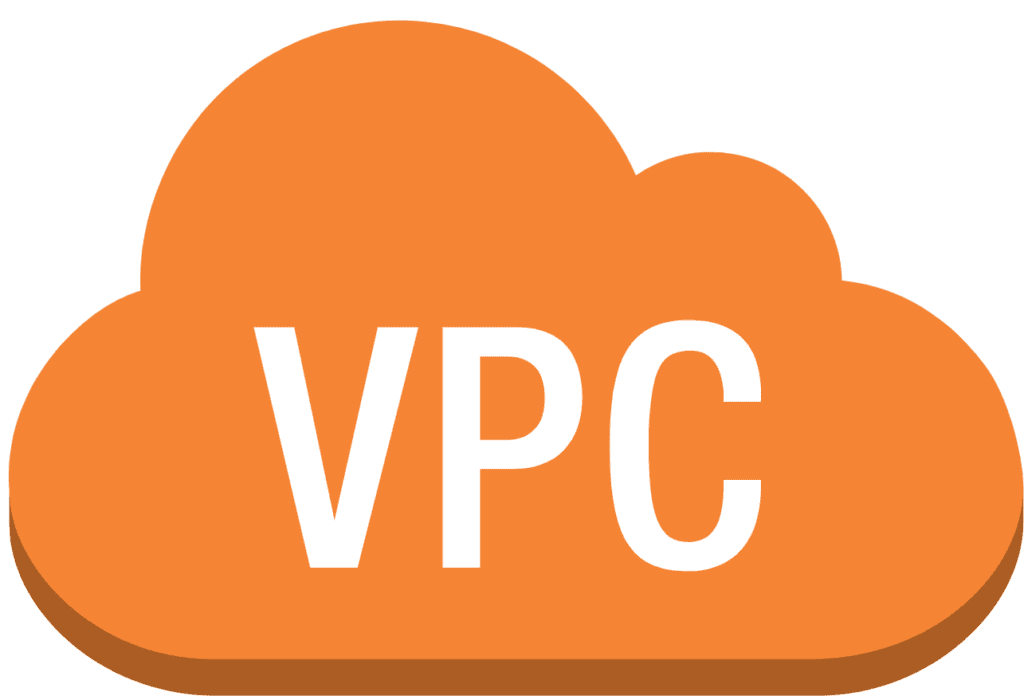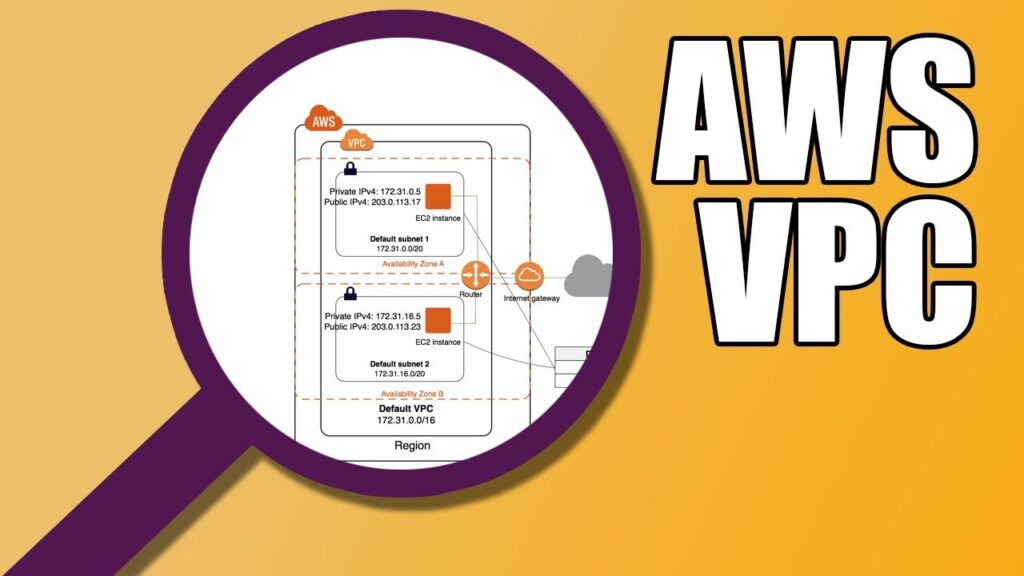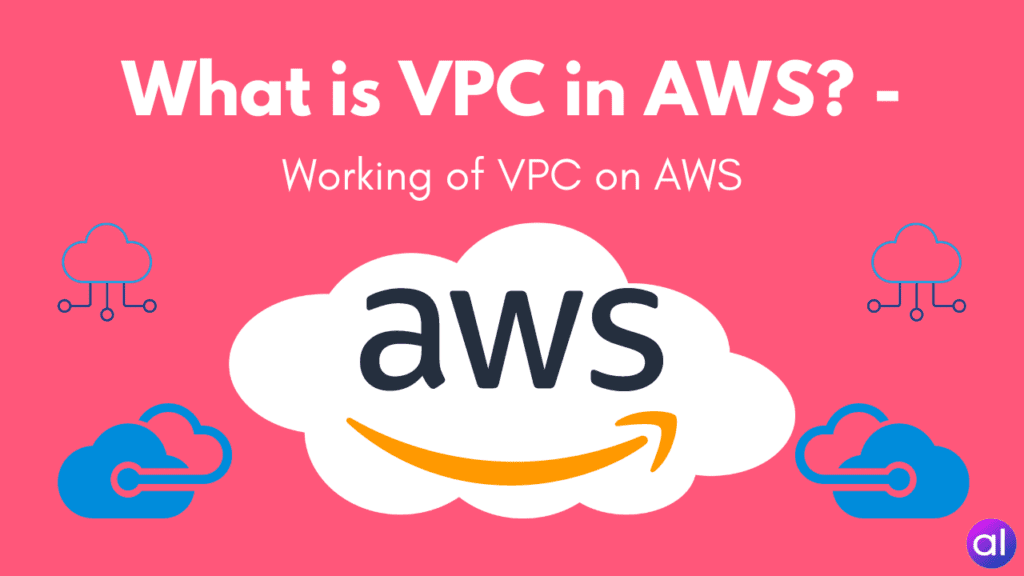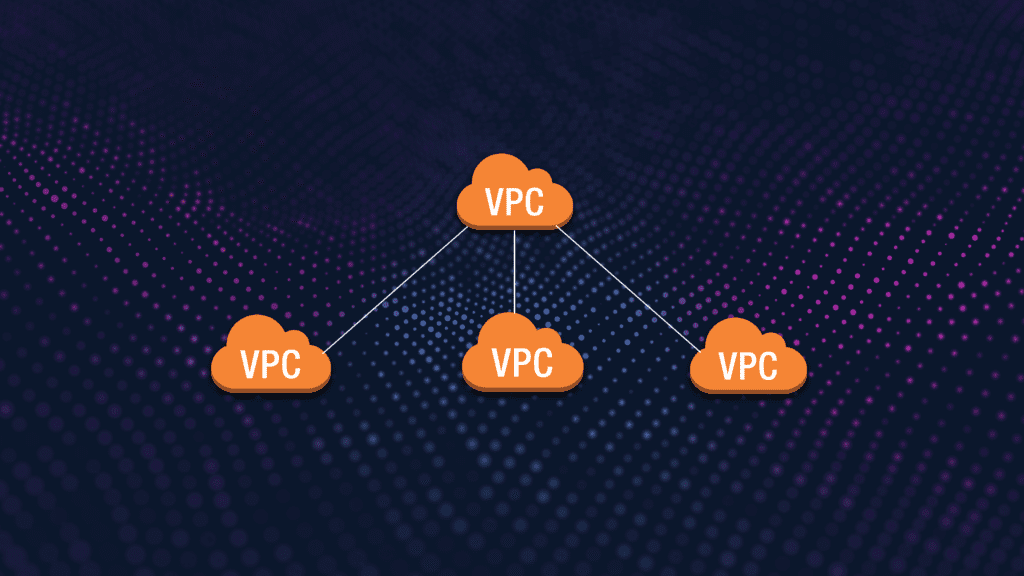When you work with AWS, you will hear the term “virtual private cloud” a lot (VPC). So, exactly what is VPC in AWS? Virtual Private Cloud, or VPC for short, is a feature of Amazon Web Services (AWS) that lets users set up AWS services in a virtual network that they design. This virtual network is a lot like a traditional network that you would run in your own data center, but it has the added benefit of using AWS’s scalable infrastructure.
Before you can start cloud operations on Amazon Web Services, you have to set up a virtual private cloud, or VPC. Let’s look at these:
What Is VPC?
You can create a piece of the Amazon Web Services cloud that is separate from the rest of the cloud with Amazon VPC. In this area, you can set up AWS resources in a virtual network that you choose. You have full control over the virtual networking environment in which you are working. In addition, you can choose your own IP address ranges, create subnets, and set up route tables and network gateways as you see fit. It’s also possible to use the AWS cloud as an extension of your corporate data center by setting up a Virtual Private Network (VPN) link between your corporate datacenter and your VPC.
The network configuration of your Amazon Virtual Private Cloud is very flexible and easy to change. For example, you could put your web servers in a subnet that is connected to the Internet and faces the public. Then, you could put your backend systems, like databases and application servers, in a private-facing subnet offline. You can control who can access the Amazon EC2 instances in each subnet by using a number of different layers of security, such as security groups and network access control lists.
FURTHER READING: |
| 1. Automated Devops: CICD Workflow Automation |
| 2. How to Buy an AWS Account? |
| 3. How to Buy A Domain with AWS? |
How VPC Works?
When you build a virtual private cloud, or VPC, in the AWS cloud, it will act as its own virtual network environment that is separate from other VPCs. Other Amazon Web Services resources and services work inside VPC networks to provide cloud services.

If you’ve ever run a traditional data center, the AWS Virtual Private Cloud will look very familiar. A virtual private cloud works in the same way as a regular TCP/IP network, but it can also grow or shrink as needed. On the other hand, the parts of a data center that you work with, like routers, switches, VLANS, and so on, do not exist directly in a virtual private cloud . After being taken apart and reengineered, they are now used as cloud software.
With VPC, it’s easy to set up a virtual network architecture to launch AWS instances. This is possible because you can do it with VPC. Each Virtual Private Cloud you create will tell AWS what your resources need, like IP addresses, subnets, routing, security, and networking capabilities.
VPC vs. Private Cloud
Using technologies like OpenStack and HPE Helion Eucalyptus, Amazon Virtual Private Cloud offers a service that is similar to what private clouds offer. Private clouds, on the other hand, often use other tools and services, like OpenShift application hosting and different database management systems.
Experts in cloud security say that using public resources puts users at risk of compliance problems that don’t exist with internal systems, such as a loss of control or the cancellation of services. They told people this. If Amazon gets a national security letter asking for transaction records for a VPC, the company might not even be able to legally tell the customer that there was a security breach on their system. Said statement would still be true even if the real VPC resources were in a different country.
10 Features of VPC in AWS
With the following Amazon Virtual Private Cloud services, you can improve and keep an eye on the security of your Virtual Private Cloud.
1. Flow Logs
You can use the VPC flow logs that are sent to Amazon Simple Storage Service (Amazon S3) or Amazon CloudWatch to gain operational visibility into your network dependencies and traffic patterns, find anomalies and stop data leakage, and troubleshoot network connectivity and configuration problems. The richer metadata in flow logs lets you find out more about who started your TCP connections and the packet-level source and destination of traffic that is going through intermediate levels (such as a NAT gateway). You can also choose to save your flow logs so that you can meet certain compliance requirements more easily.
2. IP Address Manager (IPAM)
With IPAM, it will be much easier for you to plan, keep track of, and keep an eye on the IP addresses that connect to your AWS workloads. IPAM automates the process of giving IP addresses to your Amazon Virtual Private Cloud, so you don’t have to make your own planning software or use spreadsheets. It also makes it easier to see what’s going on in your network by showing the IP usage of many accounts and VPCs in a single operational view.
3. IP Addressing
IP addresses make it possible for resources in your virtual private cloud to connect with each other and with resources elsewhere on the internet. Both IPv4 and IPv6 addressing protocols can work with Amazon Virtual Private Cloud. Inside of a Virtual Private Cloud, Amazon EC2 instances can be launched in IPv4-only, dual-stack, or IPv6-only subnets.
Also, when you give your instances public IP addresses, Amazon gives you a number of options from which to choose. You can use the public IPv4 addresses Amazon gives you, the Elastic IPv4 addresses Amazon gives you, or an IP address from the IPv6 CIDRs Amazon gives you. You can also bring your own IPv4 or IPv6 addresses to assign to these instances into the Amazon VPC. In addition to the fact that Amazon gives you this option, this is also true. Here, you can find more information about how IP addresses work in your VPC.
4. Ingress Routing
With this feature, you can send all traffic to or from an internet gateway or virtual private gateway to the elastic network interface of a certain Amazon EC2 instance. This traffic is both traffic coming in and traffic going out. Set up your virtual private cloud to send the traffic to a gateway or an Amazon EC2 instance before it gets to your company’s work. Find out more about how this feature works right here.
5. Network Access Analyzer

With the help of Network Access Analyzer, you’ll be able to make sure that your AWS-based network meets the security and compliance standards you’ve set. The Network Access Analyzer lets you set the security and compliance requirements for your network, and it finds unauthorized access to the network that doesn’t meet the requirements you’ve set. With Network Access Analyzer, you can find out how people are getting to your resources over the network. This will help you find changes to your cloud environment’s security and make it easier to show compliance.
6. Network Access Control List
A network access control list (network ACL) is an optional security layer for your VPC that acts as a firewall to control traffic going into and out of one or more subnets. You can set up network access control lists (ACLs) with rules that are similar to those of your security groups. Here, you can find out how security groups and network access control lists are different from each other (ACLs).
7. Network Manager
The Network Manager gives you tools and features to help you manage and keep an eye on your network on AWS. Network Manager makes it easier to manage connections, keep an eye on networks and fix problems, manage IP addresses, and make sure networks are secure and run well.
8. Accessibility Analyzer
With this static configuration analysis tool, you can look at the network connectivity between two resources in your VPC and fix any problems you find. After you tell it where the source and destination resources are, Reachability Analyzer shows the hop-by-hop details of the virtual path between them when they are reachable and the blocking component when they are not.
9. Security Groups
Make security groups that will act as a firewall for connecting Amazon EC2 instances, controlling both incoming and outgoing traffic at the instance level. You can link an instance to one or more security groups when you start it up. If you don’t choose a group, the instance will be added to the default group for the VPC. In your VPC, each instance is part of a different set of groups. Here, you can find out more about security groups.
10. Traffic Mirroring
This feature lets you copy network traffic from an Amazon EC2 instance’s elastic network interface and send it to security and monitoring appliances outside of the network for deep packet inspection. You can find strange things in your network and security, get operational insights, set up compliance and security controls, and fix problems. Traffic Mirroring lets you see the network packets that are going through your VPC. Here, you can learn how to use this feature for the first time.
Working with VPC in AWS
When you use Amazon Virtual Private Cloud, you have full control over the virtual networking environment in which you are working. This includes where resources are, how they connect, and how secure they are. You’ll need to set up your VPC through the AWS service panel before you can start. The next step is to add resources to it, such as instances of Amazon Relational Database Service (RDS) and Amazon Elastic Compute Cloud (EC2).
Set up the ways your Virtual Private Clouds can talk to each other, even if they are in different accounts, Availability Zones, or AWS Regions. You can install it on a secure and scalable virtual server like Amazon Elastic Compute Cloud, which is one of your options. AWS is in charge of keeping the infrastructure up and running until the hypervisor. After that, you are in charge of everything that happens. This includes taking care of the MySQL engine, the guest operating system, and the data that is on them.
Your eCommerce company is in charge of many things, such as scaling, backups, failovers, upgrades, and security patches, but not just those. Most of the time, your main job won’t have much to do with those responsibilities. Amazon Relational Database Service would be more useful, so that is what we would suggest.
With just a few clicks in the AWS Management Console, you can quickly set up a live relational database of your choice. A managed service is what RDS stands for. It takes care of a number of time-consuming database administration tasks for you, like provisioning, patching, backup, recovery, failure detection, and repair. Because of this, you are free to focus on your application, data, and business for the time being.
Different Types of VPC Endpoints
With VPC endpoints, you can connect your VPC to AWS services privately, without needing an Internet gateway, NAT device, VPN, or firewall proxies. By getting rid of these requirements, this is now possible. Endpoints are virtual devices that can scale horizontally and are always on. They make it possible for your Virtual Private Cloud instances and AWS services to talk to each other. Users of Amazon Virtual Private Cloud can choose from two different kinds of endpoints: gateway type and interface type.
Gateway type endpoints are only available for some AWS services, like S3 and DynamoDB. These endpoints will add an entry to your specified route table and send traffic to the supported services through Amazon’s private network.

Interface-type endpoints make it possible to connect over Direct Connect. These endpoints offer private connections to services that are powered by PrivateLink. These services could be from AWS, from your own business, or from SaaS. In the future, a larger number of AWS and SaaS products will be able to use these endpoints. Please look at the VPC Pricing document to find out how much interface-type endpoints cost.
Where VPCs Live
Every VPC starts and stays up and running in a single AWS region. Amazon Web Services regions are the places around the world where the company’s cloud data centers are grouped together.
One of the benefits of regionalization is that it lets a regional virtual private cloud offer network services that are native to the region. If you need to give people in another region faster access, you can set up a second virtual private cloud in that area.
This fits perfectly with the idea behind AWS cloud computing, which is that IT applications and resources will be given over the Internet on demand, with pricing based on a pay-as-you-go model. If you limit your VPC configurations to certain areas, you will be able to provide network services only where and when they are necessary.
One Amazon account can host more than one Virtual Private Cloud. Because virtual private clouds are not connected to each other, private subnets can be copied across VPCs in the same way that the same subnet can be used in two different physical data centers. You can also add public IP addresses, which let VPC-launched instances be accessed over the internet from the outside world.
Amazon will make one default Virtual Private Cloud for each account, complete with subnets, routing tables, security groups, and an access control list for the network. You can use that VPC for your cloud setups, change it to fit your needs, or build a brand-new VPC with the services that go with it from scratch.
Advantages of VPCs
Using a VPC in AWS allows you to benefit from several things.
Security
VPC’s biggest benefit is that it makes things safer. Amazon Web Services’ Virtual Private Cloud offers advanced security both at the level of the instance and at the level of the subnet. With Virtual Private Cloud, you can give some users access to cloud resources while denying that access to other users.
Easy Setup
Like most of AWS’s other services, AWS VPC is easy to set up. With the help of the AWS Management Console, it is easy to set up an Amazon Virtual Private Cloud. Your account’s default virtual private cloud has already been set up, so you can focus on developing and deploying apps instead.
Performance
The amount of traffic on the internet has a big effect on how well applications work. It could slow down traffic between applications and maybe even slow down the program itself. VPC helps things go more smoothly in this regard.
Getting Started
Your AWS resources have automatic setup and are ready to use in a virtual private cloud. You can make more VPCs by going to the AWS Management Console and clicking the “Start VPC Wizard” button on the Amazon VPC page.
You will be able to choose from among four main types of network designs. After you choose an option, you can change the size of the Virtual Private Cloud (VPC) and the IP address range of its subnets. If you choose an option that includes Hardware VPN Access, you will need to give the IP address of the VPN hardware that is already on your network. You can change the Virtual Private Cloud so that IP ranges, secondary IP ranges, gateways, or both can have more subnets added to them.
VPC Pricing in AWS
It’s necessary before using any service to understand its pricing models. This is no different with VPC in AWS.
Charging and Invoicing

Creating a Virtual Private Cloud and using it doesn’t cost anything extra. Fees for using other Amazon Web Services, like Amazon EC2, will still be charged at the prices that are listed for those services. This includes the costs of getting the data from one place to another. If you choose to use the optional hardware VPN connection to link your VPC to your corporate datacenter, the price is based on the number of VPN connection hours you use (the amount of time you have a VPN connection in the “available” state). No discount will exist if you work less than a full hour. Any data sent over a VPN connection will be charged the usual AWS Data Transfer fees. Please look at the pricing section of the Amazon VPC product page to find out how much the VPC-VPN costs.
Usage in Combination with VPC
Other Amazon Web Services, like Amazon EC2, still have usage fees at the prices for those services. When you use your virtual private cloud’s Internet gateway to connect to Amazon Web Services, like Amazon S3, you won’t have to pay any fees for the transfer of data. You will have to pay Internet data transfer fees if you use AWS resources through your VPN connection.
Taxes
Taxes and other fees, like the value-added tax (VAT) and sales tax, are not included in our prices. When they apply, there will be a list of exceptions to this rule. Customers who use Amazon Web Services and have a billing address in Japan must pay the Japanese Consumption Tax (AWS).
Conclusion
Learning about cloud computing is a great way to learn more about this field and explore it further. This will definitely help you develop your creative skills and encourage you to work toward the goal of making new things that will help people. We have hopefully covered adequately one of the most essential topics in the industry, which is VPC in AWS, in this article.
Do not be hesitant to get in touch with 1Byte if you have any more inquiries concerning either the subject at hand or cloud computing in general. Because we are an official partner of Amazon Web Services, we have the expertise as well as the infrastructure to assist you with any problem.

